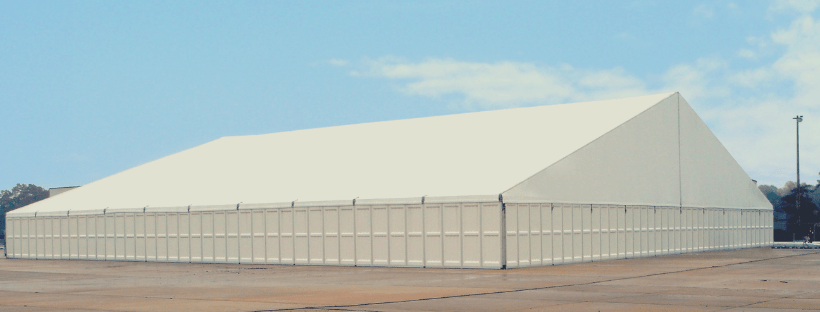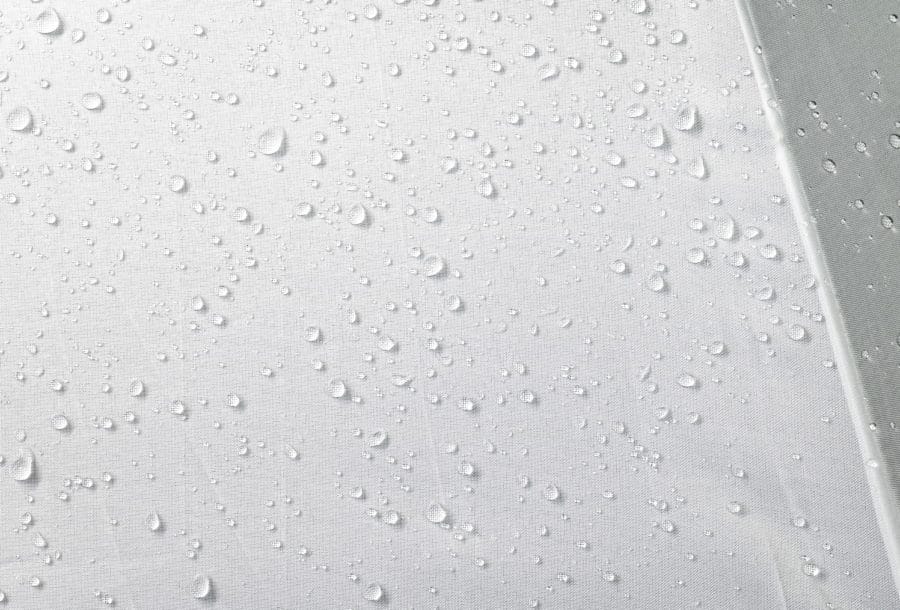Many people choose to rent a tent made with waterproof tent fabric for a variety of reasons. And, it is not surprising – tents are versatile; but which material is best for these tent rentals?
These structures provide the best open space for parties and once-in-a-lifetime wedding celebrations. But, they can also find themselves incredibly useful in more rugged areas, such as on a construction site or as a storage shelter on vast, agricultural land. And, of course, tents have always been found on the forefront of disaster relief efforts.
No matter what you choose to use your tent for, it’s safe to say that the reasoning for renting one is to stay dry. Whether referring to yourself, your guests, or the physical items stored underneath the tent, having protection by way of waterproof fabric is a definite must-have.
So, when you are ready to rent your tent, what material can provide the best protection for your needs? Let’s take a deeper look at the structure and design of these tents, shall we?
The Design and Framework of Your Waterproof Tent
If you are new to the tent rental market or you just haven’t rented one in quite some time, you may be surprised to learn about today’s premiere tent: the clearspan tent.
Clearspan tents are one of the most popular tents rented for all sorts of reasons, including the situations listed above. They provide all the perks of a tent and are designed to be very versatile.
See, these tents do not utilize guy-lines – the typical ropes, straps, or cables that are used to supply tension to a pole-supported tent structure and keep it from collapsing or blowing away.
This means that you will not require the extra space for staking the tent. And, it means that you will have open space surrounding the tent – without the worry of any hazards.
Don’t forget that – because these tents don’t require guy lines and staking – you won’t need special grounding for securing the tent. This means you can install it on:
- Concrete
- Asphalt
- Sand
- Grass
- Mulch, and more
The aluminum and steel framework of a clearspan tent provides a sturdy base to hold the fabric. After it’s pulled tightly, you’ll get the structure you need with a classy look.
Speaking of fabric, you have a few options when it comes to designing the perfect clearspan tent for your needs.
Two Types of Waterproof Tent Fabric
When it comes to anything in life, having options always feels good. It is no different when it comes to renting a tent.
Therefore, you have two choices for the fabric that will be installed over the metal framework. Will you prefer laminated vinyl or laminated fabric?
We are going to look a bit closer at both options so you will be able to choose the one that works best for your situation and needs.
Option #1: Laminated Vinyl
Laminated vinyl may be your choice if you are looking for a tried and true classic choice for fabric on your clearspan tent. This material has been on the market for over 40 years now – and has more than proven its capability.
Here is how a laminated vinyl tent covering is designed for the job:
- A layer of solid vinyl on both the top and bottom protect an inner layer of mesh material.
- The mesh is generally made from polyester or nylon.
- Heat and pressure are then used to form these three layers into one single, sturdy piece.
Option #2: Laminated Fabric
Laminated fabric may not have the lost history found with vinyl, but don’t be fooled into thinking it is not a good choice.
In fact, the laminated fabric has been the most trendy choice for the last 15 years or so. This fabric is designed like vinyl but uses a different process. There’s mesh found in the center to give it strength, but it’s covered top to bottom with liquid vinyl.
Once dry, it hardens into a very pliable material – much like fabric.
Laminated fabric is very strong.

Should You Choose Blackout or Transparent Tents?
Choosing whether you want laminated fabric or laminated vinyl are not your only choices.
Once you make the decision, you must then consider whether you want your fabric to be blackout or transparent.
Deciding on the right option for you will come down to what you intend to do with the tent:
- Are you looking to create indoor-appeal?
- Do you want to block out all the elements including the sun?
- Are you hoping to use the outdoors as a backdrop to your event, but still want protection from rain or other similar types of weather?
Blackout fabric is the most common type that you will see used in tent rentals. This is likely due to the fact that it blocks 100% of the sun’s rays and keeps the space underneath the tent much cooler.
That doesn’t mean you should ignore all that transparent fabric can provide. It can give you light throughout the day and it’ll make the tent not feel like a tent at all.
However, it is nearly impossible to control the temperature inside. In other words, if the sun is shining through the clear tent, you are going to feel it.
How is Fabric Waterproof?
Ok, let’s be honest. You may be scratching your head wondering just how is it possible to have waterproof tent fabric.
Doesn’t fabric have tiny holes? Can’t the tent leak if it is being pieced together?
Believe it or not, through their design, both of these materials are waterproof, but the fabric must be sealed together into a single piece to fit the tent.
This is done by a welder using high-frequency radio waves to rearrange the molecules and form multiple pieces of material into one single piece that is as strong or stronger than a single piece of material.
Well, there you have it – more than you ever thought you needed to know about renting a waterproof tent. Just remember, though, that the more knowledge you have, the better chance you have to rent the perfect tent for your needs.


